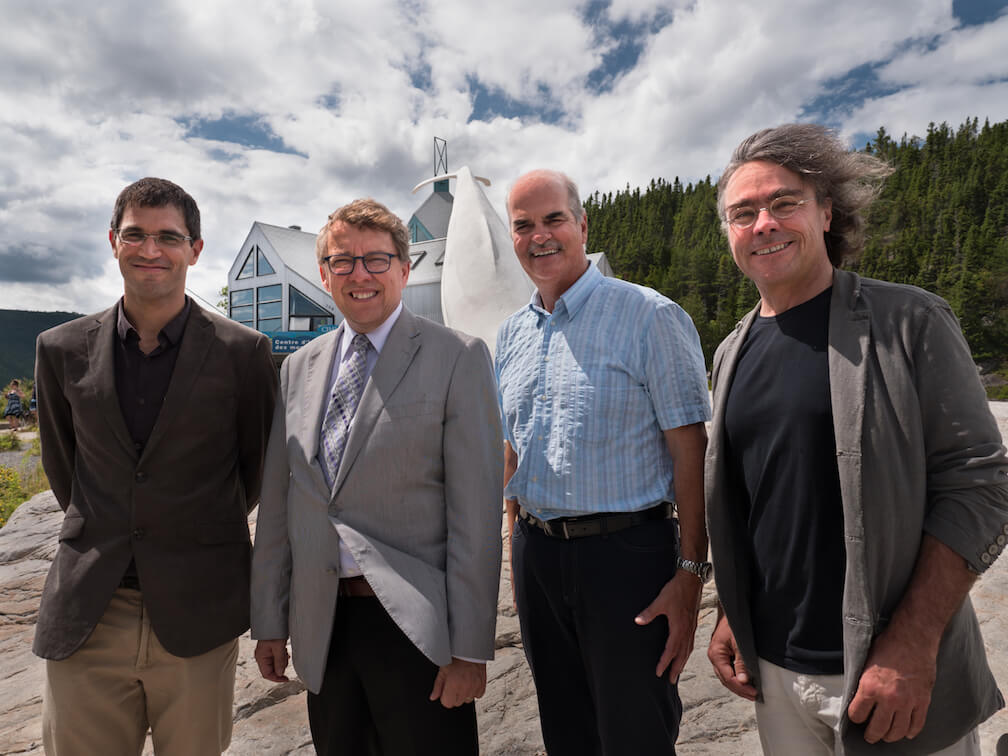A simulator of marine mammal movements and shipping traffic will be given a new lease of life thanks to a 5-year, $2.1 million investment by the Government of Quebec. This new version, overseen by Clément Chion, associate professor at the Université du Québec en Outaouais, and developed in partnership with Fisheries and Oceans Canada and the Group for Research and Education on Marine Mammals (GREMM), is particularly focused on the issues of ship strikes and noise pollution.
“If you look at the simulator interface on my computer screen, you’ll get the impression that you’re watching a video game: ‘whale points’ and ‘ship points’ share the same territory,” explains Clément Chion. But what interests this researcher is what lies behind the image. He is developing algorithms to test different scenarios involving marine mammals and the maritime industry.
Predicting the effects of noise pollution
This whale and merchant marine simulator is intended to serve as a platform for integrating biological knowledge (species-specific behaviour, distribution and communication) with the logistical and security constraints of the maritime industry. “I don’t go out into the field to collect samples. I transform data from my collaborators into mathematical calculations,” emphasizes Clément Chion. Data are provided by GREMM and Fisheries and Oceans Canada. The objective of the project is to update the 3MTSim simulator (Marine Mammal and Maritime Traffic Simulator) to make it an effective adaptive management tool in the St. Lawrence Estuary.
The grant awarded today will be used to fine-tune the existing simulator and add an acoustic dimension. Underwater noise can have significant impacts on marine mammals, including masking communication, interrupting vital activities and causing physiological stress. The aquatic acoustic environment is complex, with various anthropogenic sounds affecting species at risk – including belugas and blue whales – and sounds that travel differently depending on the sector. “My challenge will be to collect all this information and identify optimal management measures for both whales and the marine industry,” adds the specialist in modelling complex systems.
Decision-making
With the development of the Maritime Strategy, traffic in the St. Lawrence Estuary could be set to increase. In this context, new measures will need to be taken to protect the ecosystem. In 2013, voluntary measures for speed reduction and avoidance of ecologically sensitive areas were implemented using scenarios evaluated by the 3MTSim simulator.
However, Clément Chion points out, “the simulator does not provide a solution or indicate what measure to adopt. The simulator allows me to evaluate multiple scenarios and determine what will have a significant impact on marine mammals or what will involve important costs for the maritime industry. Ultimately, it is this information that informs the decisions of focus groups and decision-makers.






